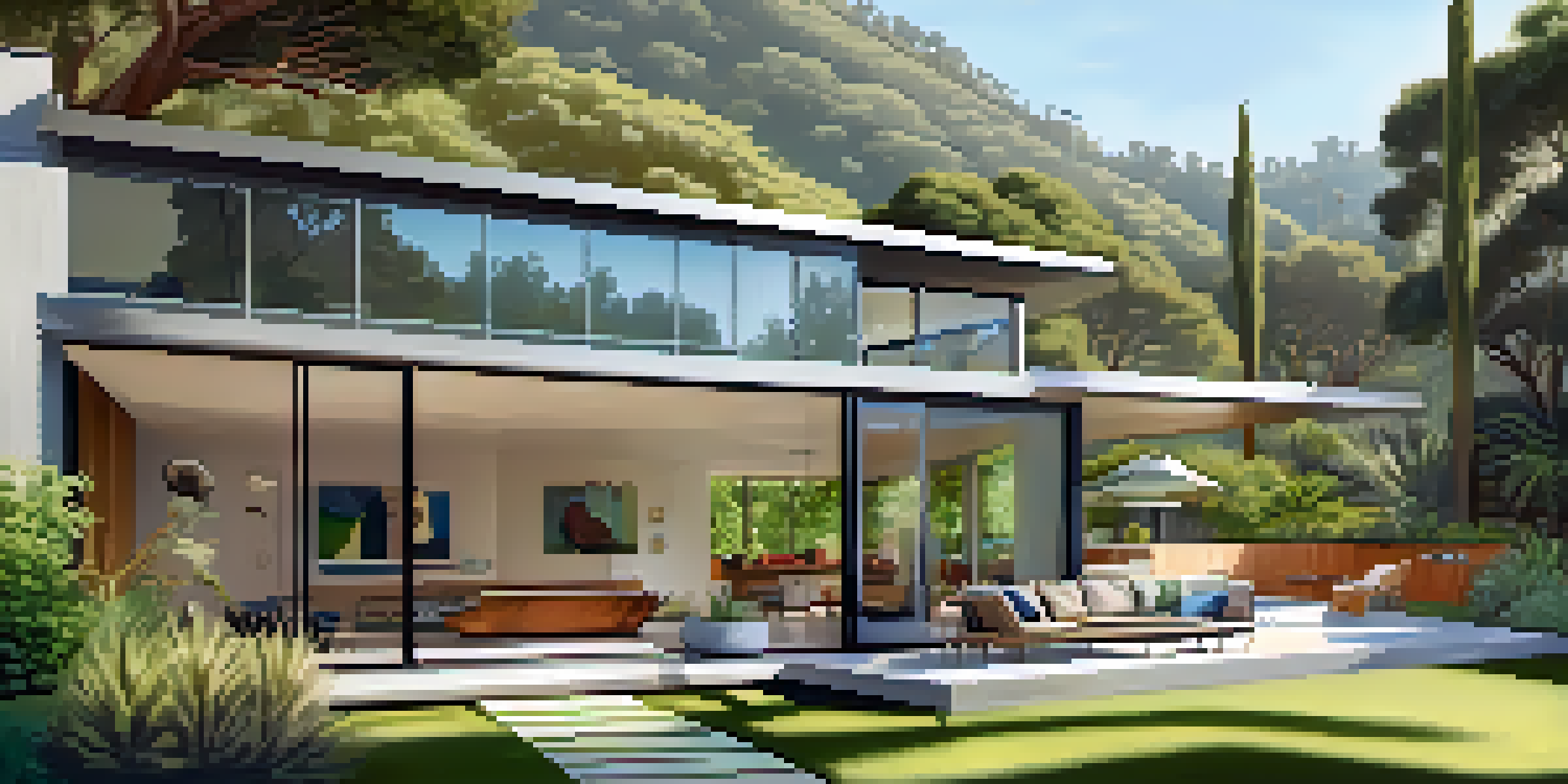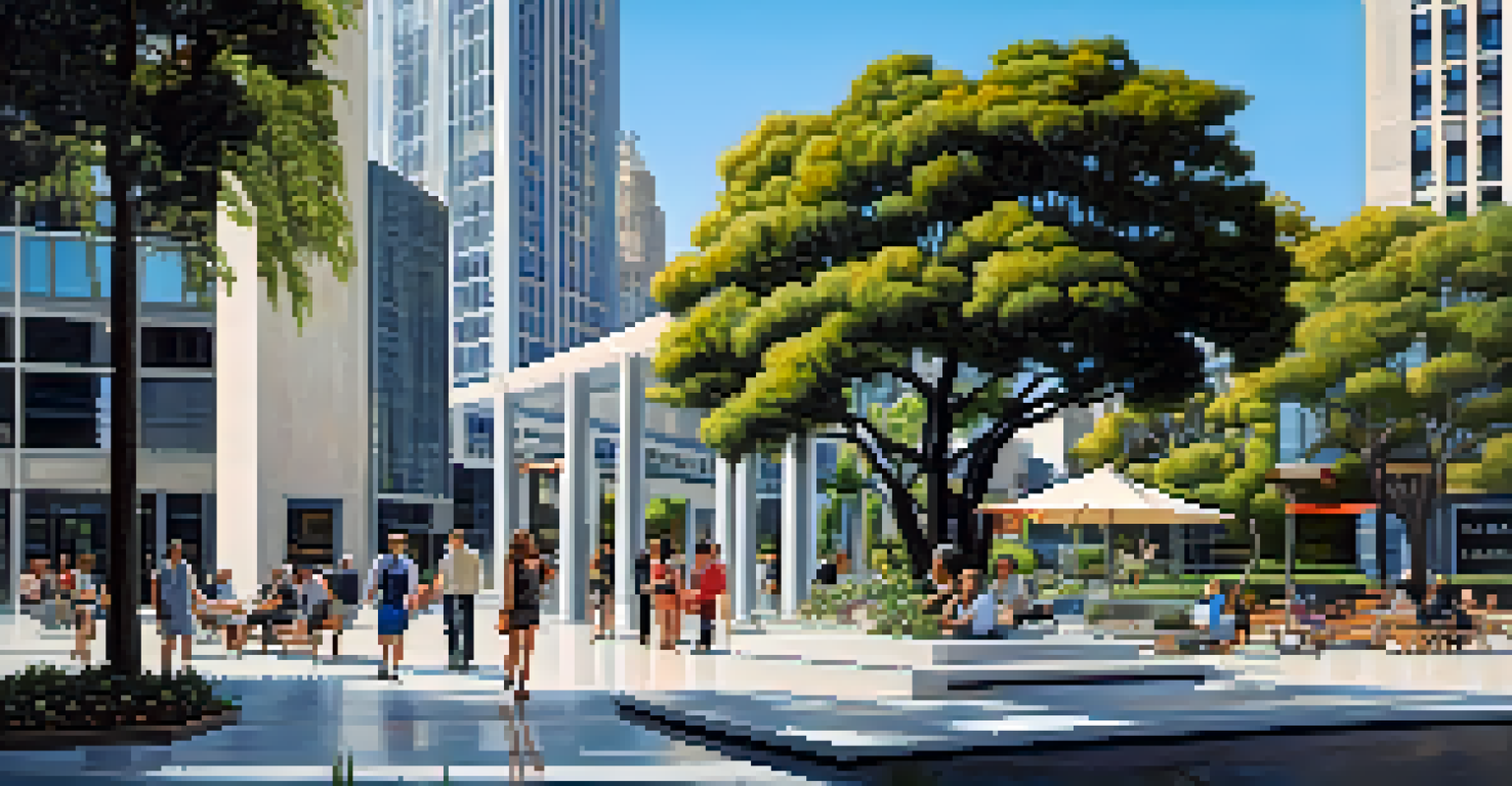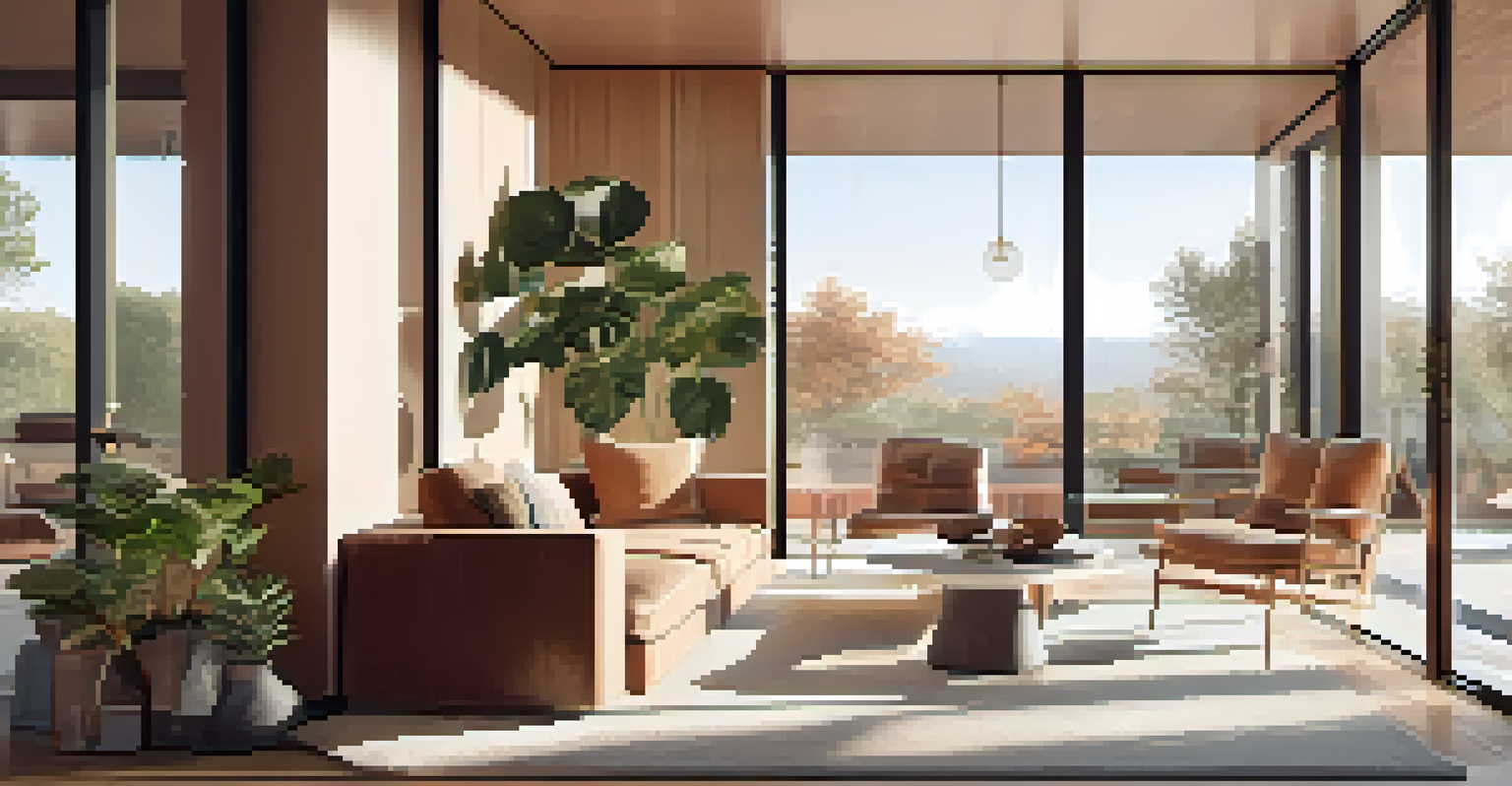The Influence of Modernism on Los Angeles Architecture

Understanding Modernism: A Brief Overview
Modernism emerged in the late 19th and early 20th centuries, emphasizing function over form. It represented a break from traditional styles, focusing on simplicity, clean lines, and a connection to the modern world. This movement was not just about architecture; it influenced art, literature, and design, aiming to reflect the changing realities of society.
Modernism is not a style; it is a way of thinking about the world.
In architecture, Modernism sought to eliminate unnecessary ornamentation, embracing materials like steel, glass, and concrete. This shift allowed for innovative designs that were both practical and aesthetically pleasing. The ideology behind Modernism was rooted in a belief that design could improve lives and reflect contemporary culture.
Los Angeles, with its sprawling landscape and diverse population, became a fertile ground for Modernist ideas. As the city grew, architects were inspired to experiment with new forms and materials, paving the way for a unique architectural identity that combined Modernism with the local context.
Key Figures in Los Angeles Modernism
Several architects played pivotal roles in shaping the Modernist movement in Los Angeles. One of the most notable is Richard Neutra, known for his ability to blend indoor and outdoor spaces seamlessly. His designs, such as the Kaufmann House, exemplified the Modernist mantra of functionality and harmony with nature.

Another significant figure is Gregory Ain, who focused on affordable housing and community-oriented designs. His work highlighted the social responsibility aspect of Modernism, showing that architecture could serve the needs of everyday people. Ain's contributions helped reshape the narrative around Modernist architecture in LA.
Modernism's Impact on LA Architecture
Modernism transformed Los Angeles architecture by emphasizing functionality, simplicity, and a strong connection to nature.
Lastly, we can't overlook John Lautner, whose innovative use of space and materials created iconic structures like the Chemosphere. Lautner's designs pushed the boundaries of Modernism, showcasing how architecture could be both playful and profound, further solidifying Los Angeles as a Modernist hub.
The Influence of the Case Study Houses
The Case Study Houses program, initiated by Arts & Architecture magazine in the 1940s, aimed to explore affordable modern living. This ambitious project invited architects to design prototype homes that embodied the principles of Modernism while catering to post-war needs. The result was a series of homes that redefined domestic architecture.
Architecture is the thoughtful making of space.
These houses, such as the iconic Case Study House #22 by Pierre Koenig, showcased open floor plans, large glass windows, and a strong connection to the outdoors. They captured the essence of Southern California living, emphasizing light and space. Not only did they influence residential design, but they also sparked a broader appreciation for Modernist architecture.
The Case Study Houses remain a symbol of innovation and creativity in Los Angeles. They inspired countless architects and homeowners, demonstrating that modern living could be beautiful, functional, and accessible—a testament to the lasting impact of Modernism on the city's architectural landscape.
Mid-Century Modernism: A Defining Era
The mid-20th century marked a golden age for Modernist architecture in Los Angeles. During this time, the city became a playground for architects, where they could experiment with new ideas and materials. This era saw the rise of iconic structures that defined the architectural identity of the region.
Mid-century Modernism was characterized by its emphasis on organic forms, integration with nature, and open, airy spaces. Architects like Charles and Ray Eames and Albert Frey pushed the boundaries of design, creating homes that felt both innovative and timeless. Their work resonated with the California lifestyle, blending indoor and outdoor living seamlessly.
Key Figures Shaping Modernism
Architects like Richard Neutra and John Lautner were instrumental in defining Los Angeles's unique Modernist identity through innovative designs.
This architectural movement not only influenced residential designs but also commercial and institutional buildings. The impact of mid-century Modernism can still be seen in Los Angeles today, evident in neighborhoods like Palm Springs and the surrounding areas, where the principles of this era continue to thrive.
Urban Planning and Modernist Ideals
Modernism in Los Angeles extended beyond individual buildings to urban planning concepts. Architects and planners sought to create functional spaces that catered to the needs of a growing city. The integration of modernist principles into urban planning led to the development of open spaces, parks, and pedestrian-friendly areas.
One notable project was the revitalization of downtown Los Angeles, where Modernist ideas reshaped the urban landscape. The introduction of mixed-use developments and public spaces helped create a more vibrant and livable city. These modernist urban planning strategies aimed to foster community engagement and improve residents' quality of life.
However, the application of Modernism in urban planning wasn't without its challenges. Balancing the needs of a diverse population while maintaining the ideals of Modernism required careful consideration. As Los Angeles continued to grow, the interplay between architecture and urban planning became increasingly vital to the city's identity.
Challenges and Criticisms of Modernist Architecture
While Modernism brought about innovative architectural designs, it also faced its share of challenges and criticisms. One common critique was its perceived coldness and lack of warmth, as many Modernist buildings prioritized function over emotional connection. Critics argued that these structures could feel sterile and uninviting, especially in a city as vibrant as Los Angeles.
Additionally, the focus on new materials and technologies sometimes led to designs that lacked historical context. Many felt that Modernist architects overlooked the cultural and historical heritage of Los Angeles, resulting in buildings that seemed out of place within their surroundings. This tension between modernity and tradition continues to spark debate among architects and historians.
Legacy of Modernism Today
The principles of Modernism continue to influence contemporary architecture in Los Angeles, promoting sustainable and aesthetically pleasing designs.
Despite these criticisms, Modernism's influence on LA architecture is undeniable. It challenged conventions and encouraged architects to think outside the box. The ongoing dialogue around these challenges has led to a richer understanding of how to blend modern design with the city's diverse history and culture.
The Legacy of Modernism in Contemporary Architecture
Today, the legacy of Modernism continues to shape contemporary architecture in Los Angeles. Many architects draw inspiration from the principles established by Modernist pioneers, creating designs that honor the past while looking towards the future. This ongoing influence can be seen in both residential and commercial projects across the city.
Modern architecture in LA often combines sleek lines and open spaces with sustainable practices, reflecting a growing awareness of environmental issues. Architects are now tasked with creating designs that are not only visually appealing but also energy-efficient and responsible. This evolution of Modernism embraces the original ideals while adapting to contemporary challenges.

Moreover, the revival of interest in mid-century Modernism has led to a renewed appreciation for the architectural gems of the past. Preservation efforts have become increasingly important, ensuring that these iconic structures remain part of Los Angeles's architectural narrative. As a result, Modernism's influence lives on, shaping the city's identity for generations to come.